Our Europe: 27 things we love about the continent
Greece
A mountain odyssey
I often dream of the journey over the Taygetos mountains from the western coast of the Peloponnese peninsula to the town of Sparta. It’s a trip I’ve done many times, most recently with my family. You start by the beaches of Kalamata, where my daughter was born, and a mere 10-minute drive up a small winding road takes you into the mountains, with the white houses and sea below. This is the route Telemachus (Odysseus’ son) took to visit Menelaus and Helen, newly returned from Troy.
It’s Greece, so these are proper mountains. The road crests at 1,600 metres, taller than Ben Nevis, and there is a Swiss chalet-style cafe here that serves good hot chocolate. We tend to stop a bit before, at the village of Artemisia, where the Theotokos taverna has a balcony overlooking a valley on one side and a spring on the other.
Locals sell herbs and honey down by the spring and the waiters (the owner’s kids) fill up your jug from it. Just before Sparta is Mystra, the ruins of a Byzantine city (pictured). The top of its battlements is my favourite spot on Earth – mountains on one side, the white splash of Sparta on the other. All of history in one spot.
Andrew Bostock
Italy
Cafe culture in Umbria
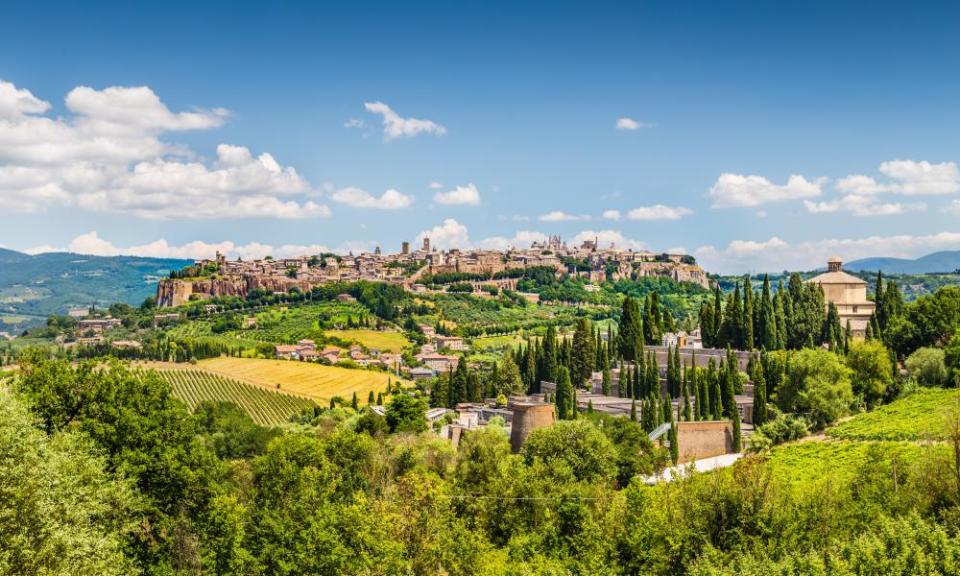
It started with a mug. That was when I knew I’d been accepted into the fold at Capitano del Popolo, a bar and restaurant in the Umbrian outpost of Orvieto. I’d sought temporary refuge in the hilltop town after losing my job in Rome in 2016, and was soon enraptured by its charms. Capitano del Popolo quickly became my stomping ground, a convivial place to drink caffè latte from my personal mug – a gift from the wonderful owner and chef, Valentina Santanicchio – or enjoy one of her dishes, such as handmade pappardelle with wild boar ragù, while sitting on the terrace under an often-piercing blue winter sky and marvelling at the 14th-century palace across the square.
Italy is brimming with history and culture, places to visit and things to do. Venice, Rome and Florence are itinerary staples, Orvieto less so. The town, with its imposing cathedral, fresh air, sublime views of the Umbrian countryside and friendships made, is now my number one place to escape to from Rome. I often describe Orvieto as a comfort blanket, which wrapped me in its warmth at a time when it was needed most.
Angela Giuffrida
Belgium
Oh, I do like to stroll along the Ostend prom
The Ostend seafront is one of the places in the EU to which the UK is (geographically) closest. This two-mile strip of Belgian coastline also offers one of the loveliest strolls in Europe. A five-minute walk from the railway station, the promenade starts with stalls selling fresh seafood and chips.
Continuing west, the route passes seafront cafes, museums, belle époque houses, a modernist casino, the splendid Thermae Palace Hotel, a spooky sculpture in memory of the Ostendais artist Léon Spilliaert, and children pleased to be at a favourite Belgian beach. But it’s the sea itself that will keep you staring. A hypnotic expanse of water, shifting through black and white, with blue, green and gold reflections of the sky. You can’t see Margate on the British coast but it’s only about 65 miles away.
When Charlotte Brontë arrived in Belgium in 1843, she wrote of her “prosperous and speedy voyage” from London Bridge Wharf along the north Kent coast and on to Ostend. Following the suspension of passenger services from Ramsgate 170 years later, there are sadly now no ferries to this windswept haven for passengers leaving England today. Thank goodness for Eurostar.
Emily Waterfield
Poland
Warsaw’s cemetery captures the essence of a continent

Warsaw’s Old Powązki cemetery captures better than almost any other place the essence of a continent that so readily defines itself in terms of its history. A resting place for generations of poets, writers and composers, the cemetery is most famous for its thousands of iron, bronze and stone tombs and sepulchral sculptures, as well as the chestnut trees, oaks and lindens that shelter you from the heavens above. But what captivates me most is the beauty and variety of the names of the great and the good of 19th- and early 20th-century Warsaw that lie below them.
Many have wonderful foreign names that provoke nostalgia for a long-gone Poland that was genuinely multicultural: names like Paweł Pellizzaro, Henryk Leon Malhomme, Kazimierz Wolff-Zdzienicki, Wacław Malcolm-Morris, Matylda de Castellaz-Abramowicz. While others are, to me at least, simply glorious names in their own right: Fidelis Matuszewski, Jan Habdank-Stpiczynski, Karolina Semelman Neugebauer, Hipolit Flock and my own personal favourite, Felicjan Szmakfefer.
Poland’s cemeteries are known for All Saints Day commemorations (1 November), when millions of Poles gather to lay candles on the graves of loved ones and national heroes. But I find the living’s habit of making the day about themselves can be irritating, and Powązki is best visited on a winter’s weekday afternoon, when you have only the dead for company – a perfect place to reflect on the future of a country and continent that refuses to rest in peace.
Christian Davies
Denmark
A very broad church
A defunct church is potentially an eerie place, but the former church of Absalon in Copenhagen’s hip Vesterbro district is always buzzing with life and laughter. In 2014, Lennart Lajboschitz, founder of the Flying Tiger retail chain, bought the building for £1.2m and exchanged the pews and altar for long tables, comfy sofas and a bar. Now around 700 people visit this community space every day: some come to enjoy a coffee, a chat and a game of backgammon or chess, others to work on their laptops.
Every evening at 6pm up to 200 people gather in the main hall for a communal meal. At around £5 a plate, it’s an affordable dining-out option that attracts people of all ages and nationalities.
Others come to attend one of numerous activities: yoga, tango lessons, quizzes, drag queen bingo, table tennis, dodgeball tournaments, bridge, life drawing, a writers’ workshop and crafts such as pottery and bookbinding. Some of these may also involve drinking Baileys … because, well, why not?
Andrea Bak
Germany
The floating railway

I could spend all day on the Wuppertal Schwebebahn, a unique suspension railway system in Wuppertal. Which makes me a Schwebebahnliebhaberin (floating rail aficionado), a word as slinky as the monorail system itself, an elegant, airy, 13km engineering wonder which snakes its way through the Wupper valley (between Düsseldorf and Cologne), humming along the track between Barmen and Elberfeld, and must be one of the nearest experiences to flying.
“Why drive, when you can float to work?” was the thinking at the turn of the 20th century, when commuter numbers were growing and construction work on it began. Industrialisation had caused the western German region to develop so quickly that there was no room for broader streets to take the increase in traffic, and so the decision was made to go high. Steel girder construction was all the rage at the time – Paris got its Eiffel Tower, Wuppertal its floating railway, complete with the strident green limbs that give it its height and majesty.
The Kaiser and his wife took a ride on it in 1900, hence the Kaiserwagen (carriage 5) with its velvet upholstery and gold trimmings, which has since been restored and can be ridden at weekends. An even more famous journey was undertaken by a circus elephant called Tuffi, who was put on it as a publicity stunt in 1950 but panicked in the overcrowded carriage and plunged into the river Wupper below. She survived with only minor injuries, as did her story, which has been retold to German children ever since.
Not only is it a pleasure to ride – ideally kneeling on a seat at the back looking out of the window on to city and river life below – but also very efficient, with a train running every four minutes and reasonably priced (€2.90 for an adult single, €7.20 for 24 hours). It remains the transport of choice for Wuppertalers, moving around 25 million passengers a year.Wuppertal is also home to the dance company of the late choreographer Pina Bausch, and the Schwebebahn features in the 2011 film Pina, Wim Wenders’ tribute to Bausch.
Kate Connolly
Bulgaria
Brutalist classic – with a great view of Sofia
It’s not the tallest structure in Bulgaria. It’s not even the tallest TV tower in the country (that accolade goes to Rousse). But Kopitoto, or the Vitosha Mountain TV Tower to give it its official name, has defined Sofia’s skyline since the mid-1980s.
Most people are quick to laud Kopitoto (which means “the hoof”) for the spectacular views it offers over the city – it stands at 186 metres (about double the height of Big Ben) on an outcrop of the 2,290-metre Vitosha mountain, around 20km from the city centre.
As a sucker for brutalist architecture, I’ve always loved the sheer scale of this concrete marvel of engineering, which is hexagonal in shape – but with three of the six sides extended, it appears almost triangular. From the 1960s until the beginning of the 90s, there was a cable car that took you up the mountain. Now the defunct graffiti-laden terminus station, right next to the TV tower, attracts urban explorers. My only regret is that it doesn’t do tours.
• Svetoslav Petrov, editor-in-chief of Boyscout magazine in Bulgaria
Czech Republic
Prague’s coolest cinema
The lifeblood of the trendy Letná district, Bio Oko cinema is the perfect place to immerse yourself in Czech culture. When I arrived a decade ago, I was here all the time, devouring every Czech-produced movie I could, trying to get to grips with the country’s dark history and offbeat humour. But it’s far more than just a cinema, and the bar outside the deckchair-strewn auditorium is a great hangout. It’s ideal for a quiet espresso during the day, but in the evening it springs into life with hip locals spilling out from the tables all the way up the stairs, drinking craft lager and eating delicious homemade quiche.
The walls are lined with old communist-era movie posters, and many of these original prints are available to buy at the Terry Gilliam-inspired shop, Terry Posters (in sister cinema Kino Svtozor), from as little as €6.
Mark Pickering
Ireland
Cork’s best bar
It’s fair to say that a few years ago Douglas Street, in Cork’s south inner city, an area blighted by the ill effects of anti-social behaviour, did not have the best of reputations. Walk along it today, however, and the historic thoroughfare, just five minutes from the city centre, has significantly been transformed.
At the western end is the oasis of Nano Nagle Place, a former convent that in 2017 was converted into a complex that celebrates the extraordinary life of the eponymous 18th-century pioneer of Catholic education. There is a museum, a garden and a “sustainable foods cafe”, the Good Day Deli, in an airy modern glass pavilion.
At the eastern edge is the primary engine of the area’s positive change: Coughlan’s. An almost 200-year-old “backstreet old man’s bar” taken over by musician and creative force Edel Curtin in 2012, Coughlan’s – which with pure Cork perverseness is pronounced “CAW-lans” – has since become the award-winning best music venue in the country.
The intimate listening room in the formerly unloved lounge bar has a total capacity of no more than 65 seated, and yet Coughlan’s has managed to attract star American singer-songwriters Anaïs Mitchell, Ryley Walker and Sarah Jarosz, and leading Irish musicians such as Lisa O’Neill, Glen Hansard, Lisa Hannigan and Mick Flannery.
It’s like a major venue in a music-savvy friend’s sitting room, with the added bonus of – so Coughlan’s claims, and with some justification – the best pint of stout in Cork.
Philip Watson
Cyprus
Medieval masterpiece
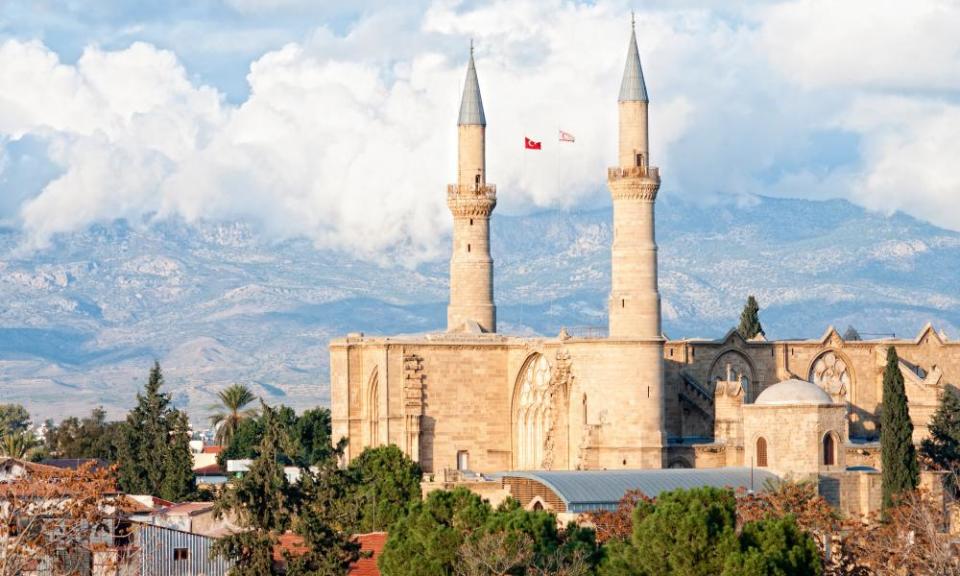
The village of Pyrga lies between Nicosia and Larnaca in the east of Cyprus. It’s a pretty place, the sort that Peter Mayle might have settled in had Provence not got him first. As it is, Pyrga’s only claim to fame is that it is home to a remarkable stone building. It could be mistaken for an old storeroom, except the gothic detail above the door hints at something more special. This building is a medieval royal chapel.
Inside, damaged but beautiful frescos look as if they have been transported from medieval France. They tell the story of the marriage of King Janus to Charlotte de Bourbon in 1411, and betray the fact that Cyprus was a medieval French kingdom. Its rulers were the Lusignans, cousins to the English Plantagenets and as the chapel’s garrulous caretaker will tell you, Queen Charlotte is an ancestor of the UK’s current queen.
Cyprus has not always been comfortable with its medieval heritage. For some, celebrating this French period and subsequent Venetian rule undermines the claim that Cyprus is a Greek island. Yet the Lusignans and their heirs left some stunning monuments, which easily overshadow the Roman remains at sites like Kourion. Apart from Pyrga, Kolossi and Limassol have two of the most intact Crusader castles , and the capital, Nicosia, is encircled by massive Venetian walls.
Most dramatic of all, in the middle of Nicosia, sits the huge 13th-century French gothic Cathedral of St Sophia, which was converted into the the Selimiye Mosque in 1570. For a lover of medieval culture like myself, these gothic churches – many of which have been converted into mosques or subsumed into Byzantine structures – make Cyprus an unexpected revelation.
Michael Paraskos, novelist and lecturer
Luxembourg
Shedloads of culture
Two former railway sheds are now home to one of the most exciting cultural spaces in Luxembourg City, which is aimed at sharing ideas and fostering new talent. Built in 1877 to store steam locomotives, the Rotondes remained underutilised throughout the 20th century (one was a warehouse, the other a bus garage). A decade ago the ministry of culture started to renovate these national monuments to host cultural activities, reopening them five years ago.
The Northern roundhouse now hosts exhibitions, lectures, dance, secondhand markets and other events. The Southern roundhouse is a dark, cosy bar that holds quiz nights, concerts and theatre performances. The building between them houses Radio ARA, where I work.
Once winter is over, the outdoor courtyard is filled with pallet furniture and people drinking and eating – bankers, hipsters, mums, musicians – the place is a magnet for all types, like Luxembourg itself.
Wendy Winn, radio presenter
Latvia
Listed market in old zeppelin hangars

Riga is an architecturally eclectic place with an incredible variety of coexisting styles: you can see the finest examples of art deco, alongside brutalist Soviet architecture and neoclassical buildings. One of my favourite places to visit is Riga Central Market, a Unesco world heritage site on the banks of the Daugava a few hundred metres from the old town. It’s a wondrous blend of art deco and neoclassicism, and when it opened in 1930 it was recognised as not only the largest, but also one of the best marketplaces in Europe.
The five pavilions are former zeppelin hangars, and beneath each cavernous ceiling is a specialist market selling vegetables, dairy, meat, fish and local specialities. Riga doesn’t have a historic cafe tradition like Paris or Vienna, but the place to meet artists and bump into writers or musicians is the Cafe Osiris restaurant, which has had a loyal clientele for 25 years. Owner Andrejs Žagars says: “It’s the only cafe that reflects part of Riga as it was at the beginning of the 1990s. This place ... is an authentic proof of the time when Riga was changing, when Latvia was changing.”
With its simple yet refined menu, Cafe Osiris is one of my favourite places to eat in the city, and we’ve used it to host Riga Biennial dinners for visiting artists on many occasions.
Agniya Mirgorodskaya, founding director of the Riga Biennial Foundation
France
An art deco gem in the post-industrial rough

As the Eurostar makes its way through northern France’s post-industrial heartland, passengers en route to Paris or Brussels just want to be on their way, which is a pity. In Roubaix, one of the grittier towns in a region once famous for its mines and factories, sits a jewel called La Piscine, an art deco swimming baths transformed into a museum. It doesn’t look much from the outside, but step into the pool hall, with its mosaic tiles and enamelled-brick showers, and the starburst stained-glass windows cast a magical glow over a collection of nude statues and sculptures from various artists and periods posed around the pool.
When I visited for the first time, the museum was almost empty and the effect was breathtaking. The frozen figures look as if they’re about to take – or have just taken – a dip in the rippling water.
There is more to La Piscine: its permanent collection, which has now been extended into a former factory next door, includes works by Giacometti, Rodin, Claudel and Picasso. But the pool hall alone is worth the visit. Get off the train at Lille and take the metro for 30 minutes to Roubaix. Paris and Brussels can wait.
Kim Willsher
Slovakia
A walk by the Danube
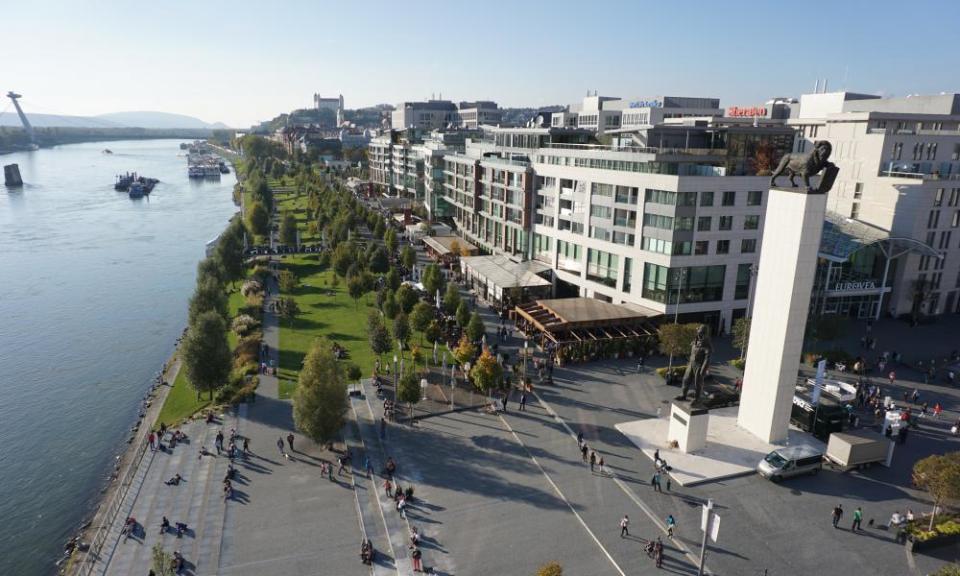
Unlike most European capitals, Bratislava is not overcrowded. Even so, it’s hard to believe that, tucked just behind the Eurovea shopping mall, there’s such a relaxing, crowd-free spot. I discovered this Danube river walk when I was working in the city and would slip off at lunchtime to stroll beside the water and watch the ducks foraging for food. There are usually couples and colleagues picnicking along the bank, but it’s also dotted with great cafes and restaurants. My favourite is Primi, a chic, Mediterranean-style eatery that serves terrific sea bass and bowls of tasty gazpacho. I actually had my first date with my now husband here – it must have had a certain kind of magic.
If you head over Starý most – a newly renovated pedestrian and tram bridge – the opposite bank offers an incredible view of Bratislava castle, especially dazzling at sunset. The “botel” and restaurant Dunajský Pivovar offers a good gawping spot, as well as some excellent Slovakian cuisine. For the complete Bratislava experience, order a plate of traditional halušky (potato dumplings with sheep’s cheese) and a summery pint of the homemade brew.
Markéta Horváthová
Sweden
Our national sauna capital
Way up north, surrounded by meadows and forests, the border between Sweden and Finland consists of lively rapids called Kukkolaforsen, part of the larger River Torne. The area has a long history of log-driving, war and smuggling, and four languages are spoken here: Swedish, Finnish, Sámi and Meänkieli – a minority language closely related to Finnish. Midsummer the sun is up all hours; at midwinter it never rises.
The tiny village of Kukkola is the unofficial sauna capital of Sweden. I warmly recommend a sweaty session in the village sauna, a large log cabin that can accommodate 65 fiery enthusiasts on three levels of long benches, heated by a large aggregate that holds 600kg of stone. Afterwards you can take a cooling dip in the stream, then head to the local inn for specialities like moose, gravadlax in a cup and coffee cheese with cloudberries.
For a historic sauna experience, follow the river north a bit to the aromatic 300-year-old smoke sauna of Matkakoski – thought to be the oldest sauna in Sweden still in use. Nearby you can fish for whitefish and salmon and forage for berries and mushrooms.
Jens Linder, chef
Estonia
Half of the country is covered in forest

Visitors are always impressed by Tallinn’s old town and fall in love with the local cuisine. But, when they venture out of the city they’re even more amazed by the open spaces, untouched nature, long empty beaches, and bus stops seemingly in the middle of nowhere.
Estonia is small (about a fifth the size of the UK) and around half of the country is covered in forest, making it very easy to escape and not see another person. Approximately one-fifth is protected under its five national parks and nature reserves. A network of hiking trails crosses the country, quite literally off the beaten path.
Lahemaa national park has a mix of forest, bog and seashore; Kõrvemaa nature reserve is great for birdwatching; and Soomaa national park is unique – it floods every year, so is only accessible by kayak.
But my favourite national park is Matsalu, known for birdwatching – it is home to over 200 different species. In spring the trees come to life with the sound of thousands of birds chirping. The birdsong is indescribably beautiful; it’s like a symphony and therapy for the soul. Like many Estonians, I have a country house that I escape to – mine is near Matsalu and has a hot tub and sauna for soaking in post-exploring.
Kristina Lupp
Hungary
Budapest’s beautiful courtyard
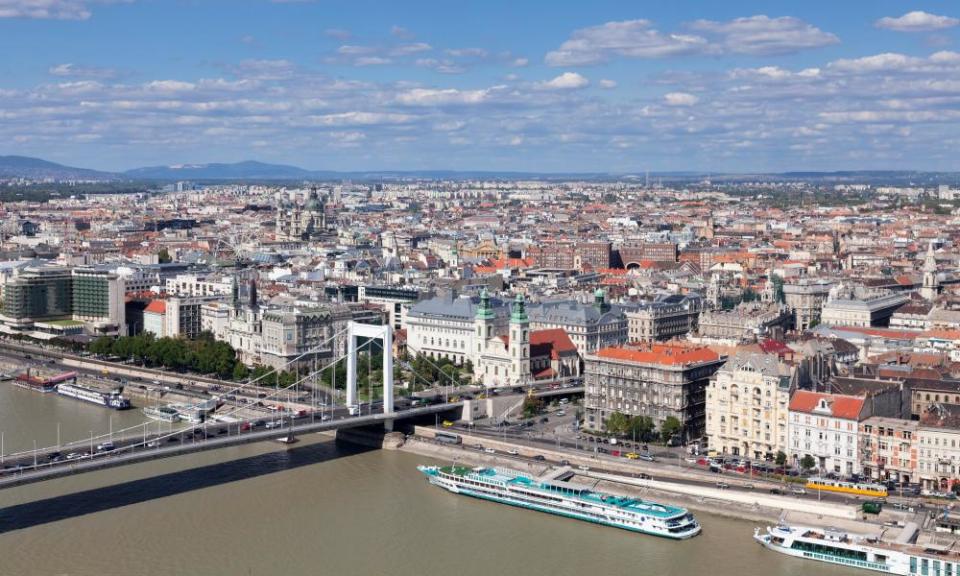
Budapest has long been marked by grand cafes, pastry shops and, above all, by the Danube flowing between the steep hills of ancient Buda and the expensive villas of Pest on the other side, comprising a wild profusion of building styles.
In the heart of Pest there is a small interior courtyard: 10 Magyar utca.
You can cut through it by day, proceeding through the quiet Magyar utca gate, stepping over silent wooden cobbles, to the busy Múzeum körút. Built by Miklós Ybl in 1852, four years after the failure of the 1848 revolution and 15 years before the establishment of the Austro-Hungarian empire, the courtyard is an eclectic, beautifully proportioned, faintly Venetian blend of classic and romantic.
Much of Budapest is empire grandeur under bombardment. This is not. There are spaces that hold you through colour, air, texture and proportion. The first time you see Giotto’s Pazzi Chapel in Florence, you feel it.
If Budapest has a humane soul, it is something like this. You breathe differently here. You hope for more.
George Szirtes
Romania
From dictator’s palace to brilliant museum

One of my favourite places in Bucharest is the National Museum of Contemporary Art (MNAC). It was here that I discovered avant-garde Romanian art, which has flourished ever since the 1970s, when dictator Nicolae Ceausescu stopped imposing the socialist-realist style.
The museum is in the neoclassical Casa Poporului, or the Palace of the Parliament, the second-largest government building in the world after the Pentagon and the embodiment of Ceausescu’s ego and ambition: building it required an entire neighbourhood of about six square kilometres to be bulldozed and 57,000 families relocated.
Getting to the museum is an adventure in itself, especially if you’re wearing high heels, as it’s a walk of a good seven minutes from the gates to the entrance.
It’s not just the contrast with the totalitarian undertones of the Palace that sets MNAC apart. On the top-floor terrace of the museum, you can enjoy a glass of lemonade or an occasional gig, and take in the best view of Romania’s divisive new People’s Salvation Cathedral, which cost the country about €400m.
Paula Erizanu
Netherlands
On a sunny day it could almost be Thailand …
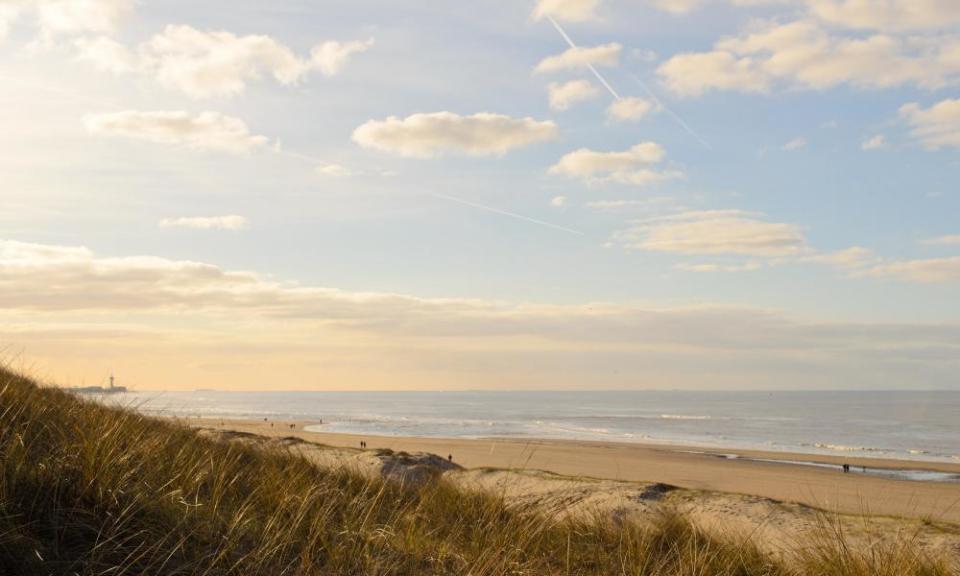
Hook of Holland is an odd place to love. Go there and look south, and you’ll see one of the densest concentrations of industry in Europe: giant cranes, chimneys smoking like upturned cigars, and massive cargo ships rumbling their way from the Rhine into the North Sea. Yet head north and you’ll see something different: an arc of empty white sand stretching for miles. On a sunny day, you could almost be in Thailand.
The appeal lies partly in the beach’s beauty, but also in the way it captures the spirit of the Netherlands: beautiful but industrious, peaceful but dynamic. It’s a crossroads where culture and history have always blended, like ingredients in a cocktail.
I first came to the Hook a decade ago, soon after I moved to the Netherlands, when I lived just up the coast. Later, my wife and I were married in the sand dunes. Now, I come here often with our little daughter and watch her play in the waves. Sitting on the sand with a plate of fresh fish, we’re nearly as close to Essex as Maastricht. Britain feels tantalisingly close, yet also very far away.
Ben Coates, author of The Rhine: Following Europe’s Greatest River from Amsterdam to the Alps (John Murray Press, £9.99)
Slovenia
On the sunny side of the Alps

If you’re a wise enough traveller to know that Slovenia is well worth a visit, then you’ll be sure to see the delightful capital, Ljubljana, and will doubtless head off to fairytale Lake Bled, dolloped by a church-topped island and with a Grimm castle looming on a clifftop above it.
The question, then, is: what else you should see, beyond the Big Two attractions? My favourite place in my adopted homeland is the medieval town of Kamnik. Once a far more important city than Ljubljana, it was the feudal stronghold of the Bavarian Andechs clan, who made it a stop on trade routes between Budapest in the east and Venice to the west.
Today the town boasts three castles, hiking trails close to the centre, an important rare books library, rich industrial heritage (the KIK factory here once produced much of the gunpowder for the Austro-Hungarian army and the Stol factory exported Thonet rocking chairs to the US), and may have the most microbreweries per capita in the world (six for a population of around 10,000). At the foot of the Kamnik-Savinja mountain range, it is also an ideal gateway to the sunny side of the Alps, a 10-minute drive from the Velika Planina mountain plateau , the closest you’ll get to Middle Earth in Middle Europe.
Noah Charney, author of Slovenology: Living and Traveling in the World’s Best Country
Austria
Vienna’s Imperial Parliament
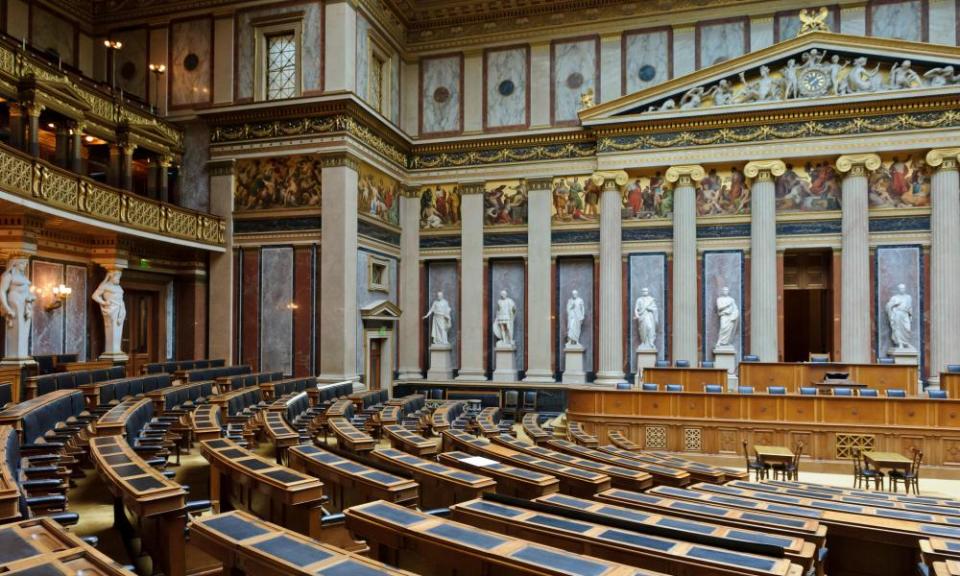
My favourite place in Vienna – and indeed in Austria – is one that conjures up the most vivid image of the former multi-ethnic and multilingual western half of the Habsburg empire: the chamber of the former House of Commons (Sitzungssaal des Abgeordnetenhauses) in the old Imperial Parliament (Reichsrat). It’s largely unused since the collapse of Austria-Hungary in 1918 (except for the swearing-in of the president); miraculously, it also escaped wartime bombing.
What is splendid and moving about it, aside from its size, beauty and sense of history, is the fact that representatives from almost all parts of the empire gathered there from 1883. German speakers from Austria itself and also from Bohemia, Moravia, Silesia, Carniola and Bukovina, as well as Czechs, Slovenes, Croats, Serbs, Poles, Ukrainians, Italians, Romanians and even one member of the Jewish National Party, all elected on the basis of universal male suffrage after 1907, met in this chamber. For all the linguistic chaos and political divisions, the riotous and boisterous filibustering, the subterfuges and boycotts, it somehow functioned as the world’s first multinational parliament.
In 1918 it became redundant and the individual nations went their own way, leaving the leaders of the new Austrian Republic too few to fill the former Imperial Chamber. Subsequent decades saw conflict between many of the nations that had been part of Austria-Hungary, culminating in the Balkan wars of the 1990s; this chamber is reminiscent of gentler times, when all nations of the monarchy – no matter their disagreements or even hatreds – were able to contain themselves in a usually civilised arena rather than resort to violence.
The modern-day EU parliament, with its 705 MEPs representing 27 countries, is perhaps its heir, though it lacks its magic and gravitas.
At the moment, the Imperial Parliament building is closed for rebuilding and refurbishment, and will remain so until 2021. The glorious former House of Commons chamber itself will undergo a mere clean-up and a few repairs, and will return to its full splendour.
Christopher Brennan
Lithuania
Modern museum that recreated our past
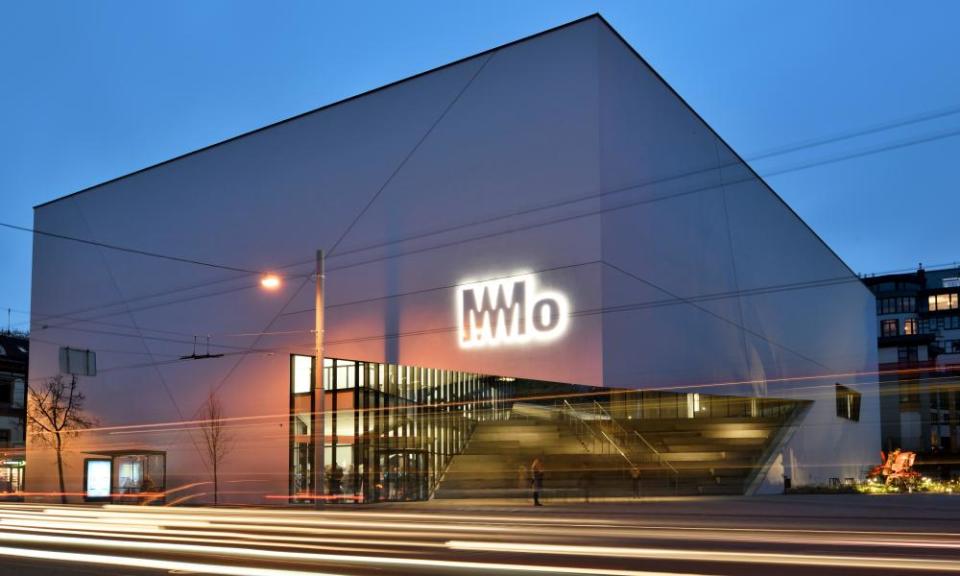
MO museum, which opened in October 2018, changed everything in Vilnius. Not only is it an incredible place for Lithuanian modern art, it’s also an example of new-wave Lithuanian philanthropy. The museum was funded by two Lithuanian scientists and designed by architects at Studio Libeskind. It’s a striking building, at the intersection of the old town and the city’s more recent westwards expansion.
MO museum recently had a wildly successful exhibition called The Origin of Species: the 1990s DNA. I went four times, because it really was a way to relive our recent history – the wild 1990s, the starting point of capitalism in Lithuania, the foundation of our modern, democratic state.
You could relive experiences such as trying on new jeans in winter while standing on a piece of cardboard in Gariūnai (the infamous open-air market 20 minutes outside Vilnius); buying one cigarette from a kiosk; and watching movies on a VHS player.
There are permanent exhibitions of Lithuanian modern art as well – my favourite painter is the postmodernist Šarūnas Sauka. The museum also has a boutique cinema, a cafe and a small shop full of great Lithuanian art, jewellery and books. At the moment, preparations are being made for a huge exhibition showcasing the works of cult British film director Peter Greenaway. Artificial rain is said to be part of the show’s experience.
Neringa Rekasiute
Spain
The Barcelona market that feels like home
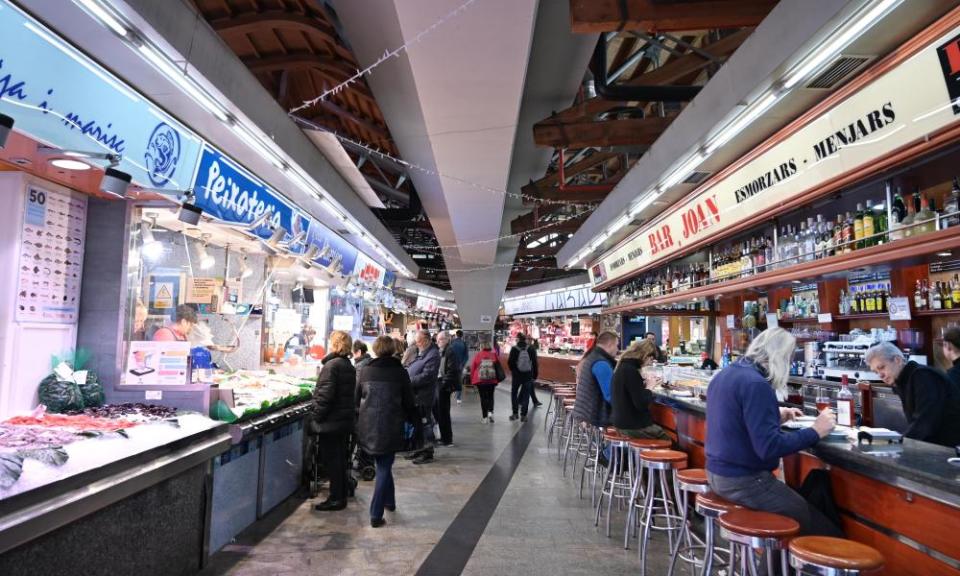
Two or three times a week for the past 18 years, I have shopped in Barcelona’s Santa Caterina market. It’s a social event as much as a shopping expedition and not somewhere you can go in a hurry because there are always updates on children, illnesses, operations and deaths to be discussed. It has a very Mediterranean, familial vibe.
I often have breakfast in the market bar, Bar Joan, a family affair run by Joan and his sons and daughters. They know their customers well and no sooner do I pull up a red vinyl stool than one of them is fixing me a café con leche and calling to the kitchen for a bikini (toasted ham and cheese). They also make a fine tortilla de patatas.
One morning I sat next to a man who breakfasted on tripe and beer followed by a carajillo (coffee with a splash of cognac). Spanish men of a certain age often kick off the day with a hit of booze, frequently red wine. Even after living here for 20 years I can’t imagine drinking wine at 8am, which is probably just as well.
Stephen Burgen
Malta
Caravaggio in Valletta
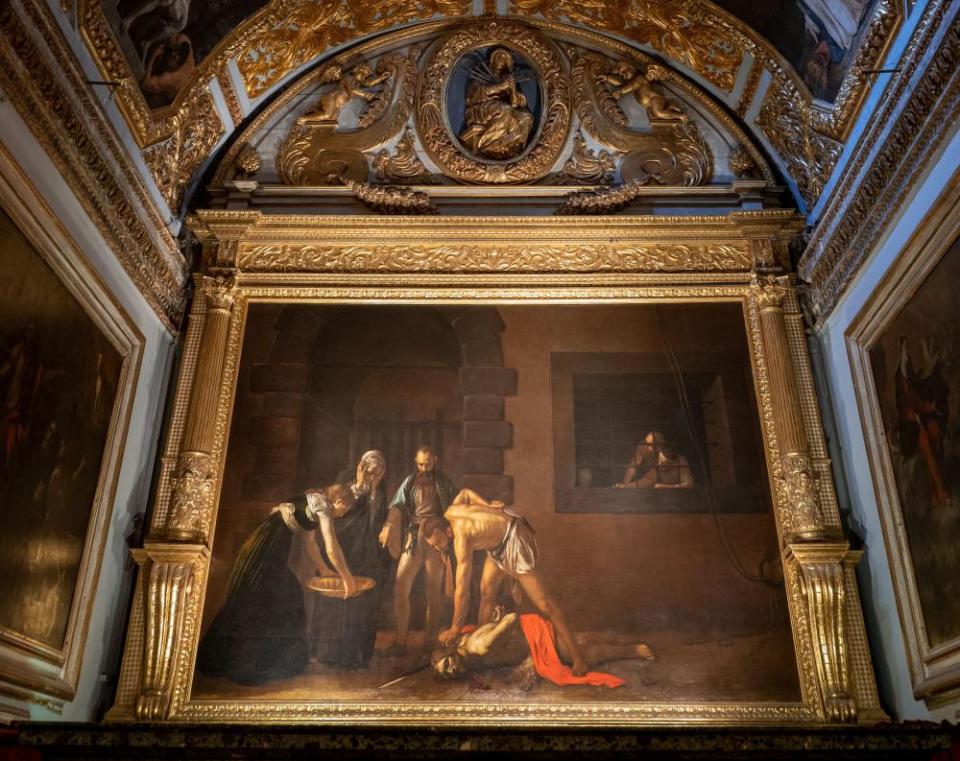
In Malta’s capital city there are more than 25 churches displaying incredible baroque paintings and architecture. In the oratory of the church of the Order of St John, which is a true gem of high baroque, there is a painting that I really admire and always moves me: Caravaggio’s Beheading of St John the Baptist.
Included in the Guardian’s list of the 10 greatest works of art ever, and once described as “the painting of the 17th century”, it is as alive now as it has ever been, and with a message that is still relevant: life and death, youth against old age, the contrast of colours, with light and dark captured by the astounding chiaroscuro technique of the eccentric genius. It reveals not only the story but the very self of the artist, and engulfs the observer in its theatrical action, sparking our emotions too.
There are many historical sites to visit in Valletta – the Grand Master’s Palace, Casa Rocca Piccola (a “living” 16th-century palazzo), the Malta National Community Art Museum – but Caravaggio’s masterpiece is the one I always come back to. A visit to the cathedral and its oratory is by far the highlight of the Valletta experience.
Fra Nikola Soukmandjiev, diplomat, priest and tour guide
Croatia
A fragrant island

The air is heavy with the scent of wild rosemary, sage and pine as I cycle along the path that skirts Lošinj’s north-western headlands.
They call Lošinj “the island of vitality”, and this is more than mere marketing guff. Wild herbs blanket this long, spindly island that dangles into the Kvarner Gulf south of Rijeka, and the smell of them instantly gives me a lift during my meandering bike ride through the pines.
Every now and then I park my bike and plunge into the impossibly clear water. I love the fact that the beaches that ring Lošinj are – like most of those in Croatia – pebbly rather than sandy. Some of them take a bit of effort to reach, usually involving a long hike down a rocky trail, if you don’t have your own boat.
This all adds to the rough-and-ready ruggedness you get away from the big beach resorts. Simplicity is the key, and you can taste it in the grilled fish served at waterside restaurants and the giant rounds of bread baked under a cast-iron bell.
It’s this gentle assault on all the senses that I appreciate every time I go to Croatia’s Adriatic coast – from the vivid blue-green of the sea to the heady fragrance of herbs and pine that have been baked in the heat. Total bliss.
Mary Novakovich
Portugal
The sweet life

When democracy returned to Portugal in the spring of 1974, the Portuguese celebrated by throwing themselves into building a “modern” nation state (with the aid, later, of EU funding). While I love the bright lights and cosmopolitan vibe of Lisbon and Porto, it is the vestiges of “old” Portugal that really enchant me. To find them, just step into any neighbourhood pastelaria (cafe-bakery). You’ll find the day’s newspaper on a table, the footie on the TV and friends shooting the breeze over average-tasting but cheap (less than €1) café expressos.
In Portugal, pastelarias double as repositories of local pride. Aside from the ubiquitous pastel de nata (the famous creamy custard tart, now available in M&S), every self-respecting Portuguese town boasts its own speciality sweet. Cernache do Bonjardim has its almond cartuchos (shells); Castro Daire its bolo podre (literally, “rotten cake”); Chaves its meat-filled pastel. My favourite is the sugary, eggy palha (straw) sweet from the historic city of Abrantes in the centre of the country. For the real deal, head to Confeitaria Palha de Abrantes on the main square: Portugal, in a single bite.
Oliver Balch
Finland
Midsummer movies
The Midnight Sun Film Festival, established in 1986, enjoys a stellar reputation among cinephiles and moviemakers. A true celebration of the craft, the five-day festival skips the red carpets and invites the audience and acclaimed international directors to the small village of Sodankylä, in Finnish Lapland, to enjoy the round-the-clock feature film screenings each June, when the sun blazes above the horizon day and night.
The programme ranges from premieres and rarities to classics and oddities, from silent films to karaoke singalong shows in a former circus tent. The morning discussion sessions with directors are a much-loved tradition, but not everybody makes it to those – the price of wrecking one’s circadian rhythm with high doses of sunshine.
The laid-back atmosphere and lack of hierarchy encapsulate something of the Finnish propensity for happiness (Finland has topped the world’s “happy league” for the past two years). At an intimate festival whose whole ethos is to celebrate a love of cinema, one feels comfortable sharing a drink, a story or even a sauna with a random film buff or a world-famous film director – former guests include Francis Ford Coppola, Mike Leigh and Terry Gilliam.
Emma Kähkönen
Looking for a holiday with a difference? Browse Guardian Holidays to see a range of fantastic trips

